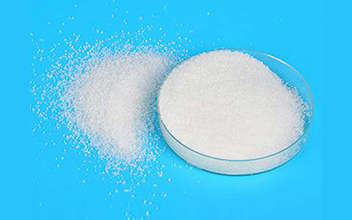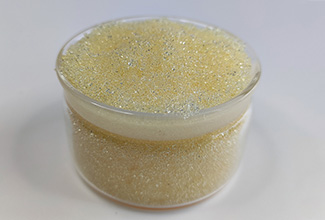What Are Ion Exchange Resins For Aquariums?
1. Why Do Aquariums Need Ion Exchange Resins?
In aquariums (especially saltwater, tropical, or coral aquariums), stable and pure water quality is crucial for maintaining the healthy growth of fish, corals, and aquatic plants. Various ions hidden in natural or municipal water sources often pose a hidden threat to aquatic ecosystems:
Calcium and magnesium ions contribute to excessive water hardness, disrupting the osmotic balance of aquatic organisms.
Nitrogen-containing ions such as nitrates, nitrites, and ammonia are produced by the decomposition of biological waste and leftover bait. Accumulating to a certain concentration can deteriorate water quality and even cause fish poisoning.
Heavy metal ions such as iron and copper can cause irreversible toxicity to sensitive aquatic organisms, even at extremely low levels.
Phosphates promote algae growth, leading to problems such as green water and algal blooms, which in turn deprive aquatic plants and corals of their resources.
Imbalances in these ions can directly disrupt the microecological balance of the water, leading to a series of problems such as fish stress, coral bleaching, and plant wilting. Ion exchange resins, with their highly selective adsorption and exchange capabilities, are a safe purification material for addressing these issues, providing a first line of defense for aquarium ecosystems.
2. Main Uses of Ion Exchange Resins in Aquariums
1. Removing Hardness Ions (Softening Water)
Cation exchange resins are a core material for water softening. They effectively reduce water hardness by directional exchange between sodium ions (Na⁺) in the resin matrix and calcium ions (Ca²⁺) and magnesium ions (Mg²⁺) in the water.
Suitable Applications:
Culturing tropical fish sensitive to water hardness (such as discus and angelfish);
Planted aquarium systems (a soft water environment optimizes photosynthesis efficiency for aquatic plants and promotes nutrient absorption).
2. Removal of Nitrates, Nitrites, and Ammonia
Anion exchange resins capture nitrates (NO₃⁻), nitrites (NO₂⁻), and ammonia ions in water through chemical adsorption. These substances are the main sources of "water toxins" in aquariums.
Common Applications:
Controlling nitrate concentrations in freshwater and saltwater aquariums, reducing water change frequency;
Serving as an auxiliary filtration unit, in conjunction with activated carbon, bio-cottons, and other components to form a composite filtration system;
High-performance mixed-bed resins (anion and cation blends) simultaneously remove positive and negative ions, bringing water quality to near-pure water standards, meeting the needs of high-end aquaculture.
3. Removal of Heavy Metal Ions
Specialized resins such as chelating resins possess selective adsorption properties, precisely capturing heavy metal ions such as copper (Cu²⁺), iron (Fe²⁺), and zinc (Zn²⁺) in water, cutting off the toxic pathways at the source.
Particularly Suitable For:
After fish disease treatment (e.g., removing residual copper ions after using copper-based medications);
Aquaculture scenarios where groundwater or tap water contains excessive metal content.
4. Phosphate Control and Algae Inhibition
High phosphate levels are a key factor in algae blooms. Modified anion resins or alumina composite resins efficiently adsorb phosphate (PO₄³⁻) ions, inhibiting algae growth from the nutrient source. This purification method prevents problems such as "green water" and algae film on the tank walls, maintaining water clarity.
3. Usage and Maintenance
1. Placement
The resin should be placed in an area with good water flow, such as a filter barrel, bottom filter chamber, or dedicated filter tank, to ensure adequate water contact with the resin. It is recommended to use a fine-mesh filter bag to facilitate water flow and simplify subsequent replacement and removal.
2.Service Life
The resin's service life is affected by water loading, stocking density, and resin capacity. It is generally recommended to inspect the resin every 2-4 weeks. If the resin's color darkens significantly (e.g., from light to dark brown) or its purification performance decreases (e.g., nitrate concentration increases), it must be replaced or regenerated promptly.
3.Regeneration Methods
Softened resins: Regeneration can be performed with saline (NaCl solution). High-concentration sodium ions replace adsorbed calcium and magnesium ions on the resin, restoring exchange capacity.
Denitrate/phosphate resins: Follow the product instructions and use a dedicated regeneration solution.
Mixed-bed resins: Regeneration is typically performed using a stepwise acid-base regeneration process to activate the anion and cation exchange groups separately.
4.Comparison of Common Resin Types
|
Resin Type |
Removal Targets |
Suitable Applications |
Regeneration Method |
|
Cation Exchange Resin |
Ca²⁺, Mg²⁺ (Water Softening) |
Freshwater Aquariums, Planted Tanks |
Saltwater |
|
Anion Exchange Resin |
NO₃⁻, NO₂⁻, PO₄³⁻ |
Freshwater / Saltwater Aquariums |
Specialized Solution |
|
Mixed Bed Resin |
Comprehensive Deionization (Cations & Anions) |
High-End Marine Tanks, Reef Tanks |
Separate Step Regeneration |
|
Cu²⁺, Fe²⁺, Zn²⁺ (Heavy Metals) |
Post-Medication Purification, High Metal Content Water |
Specific Chemical Solution |
5. Benefits of Using Ion Exchange Resins in Aquarium Industry
Maintain a Steady Ph Level.
The health and survival of aquarium inhabitants depend on constant attention to the aquarium’s pH balance. By eliminating surplus ions that could otherwise cause pH changes, ion exchange resins can aid in maintaining a consistent pH level.
Facilitate Greater Visibility In The Water.
By eliminating contaminants that contribute to water turbidity or colouring, ion exchange resins can increase water clarity. If done properly, this can make aquariums more pleasant to the eye.
Get Rid of All The Junk In The Water.
Chlorine and other chemicals found in municipal water supplies can be toxic to fish and other water organisms. Because of the efficiency with which ion exchange resins can remove these contaminants, the water quality in which fish, plants, and other aquatic life can thrive is greatly improved. However, in order to extend the useful life of the ion exchange resin, its use is ideally combined with activated carbon.
Keeping Algae At Bay Is a Priority.
When there are too many nutrients in the water, algae blooms are a regular problem in aquariums. By removing organic debris and these surplus nutrients, ion exchange resins help lower the potential for algae growth.
6. Summary
Ion exchange resins are a core tool for aquarium water quality management:
Efficiently remove harmful ions and heavy metals
Precisely regulate water hardness and pH balance
Inhibit algae growth at the source
Significantly improve water clarity
Enhance the health of fish and corals
As a key component of high-end filtration systems and RO water purification units, they help aquarists easily maintain ecological balance and create a stable living environment for aquatic life.
-
.jpg) Super Absorbent Polymer SAP for AgriculturalMain ngredient:Potassium PolyacrylatePhysical Property:Non-toxic,NonpollutingFunction:Drought control /Saving water /Soil conditioner
Super Absorbent Polymer SAP for AgriculturalMain ngredient:Potassium PolyacrylatePhysical Property:Non-toxic,NonpollutingFunction:Drought control /Saving water /Soil conditioner -
 High Water Absorbent Resin for Diapers Super Absorbent PolymerNontoxic, harmless, nonpollutingHigh water absorbent capacityRaw material
High Water Absorbent Resin for Diapers Super Absorbent PolymerNontoxic, harmless, nonpollutingHigh water absorbent capacityRaw material -
 201×7 Anion Exchange ResinAppearance: Light yellow to gold yellow transparency sphericity particles.The degree of crosslinking : 7%.Ionic form:Cl-
201×7 Anion Exchange ResinAppearance: Light yellow to gold yellow transparency sphericity particles.The degree of crosslinking : 7%.Ionic form:Cl-

